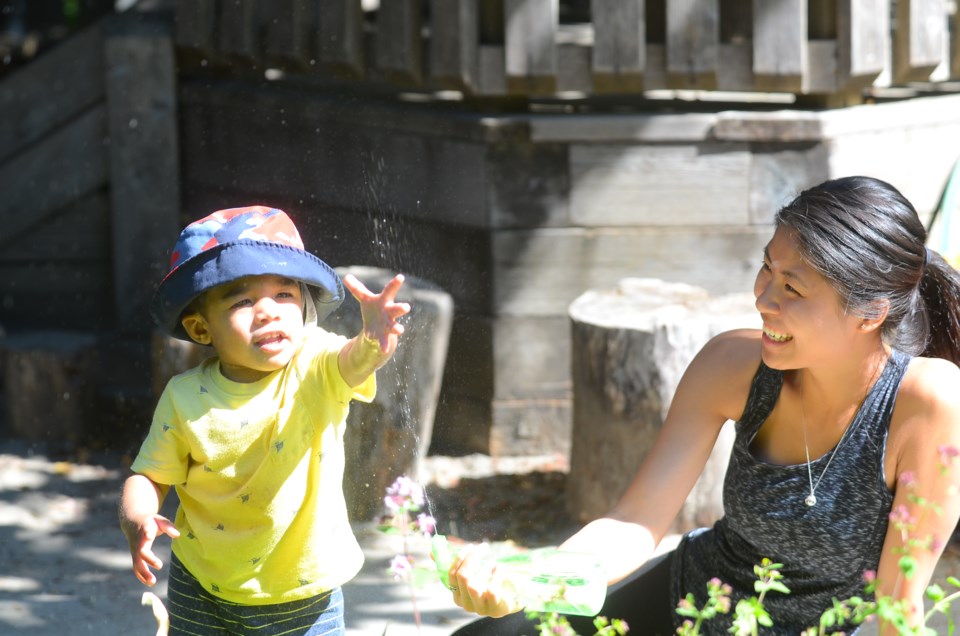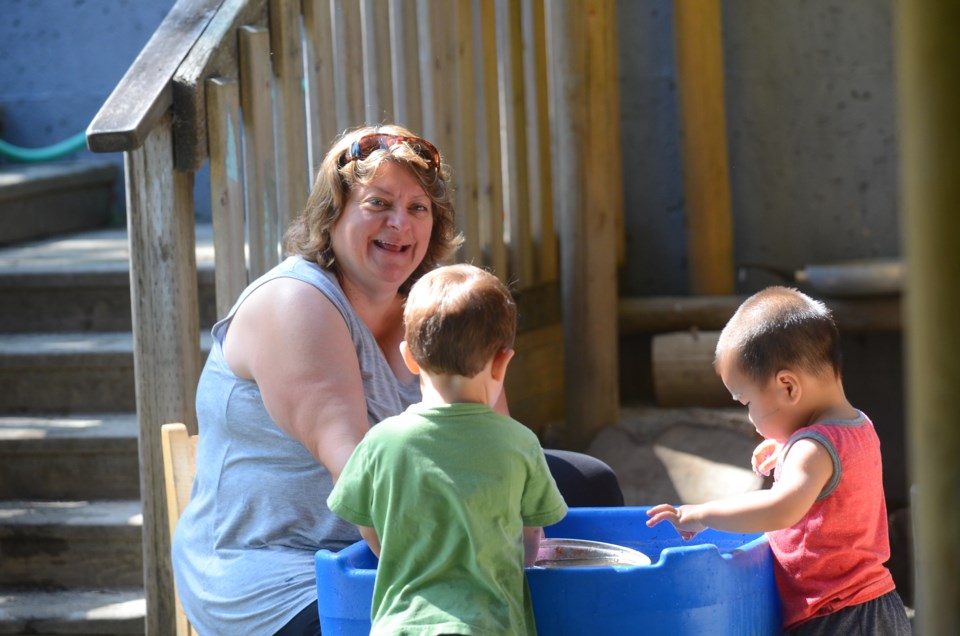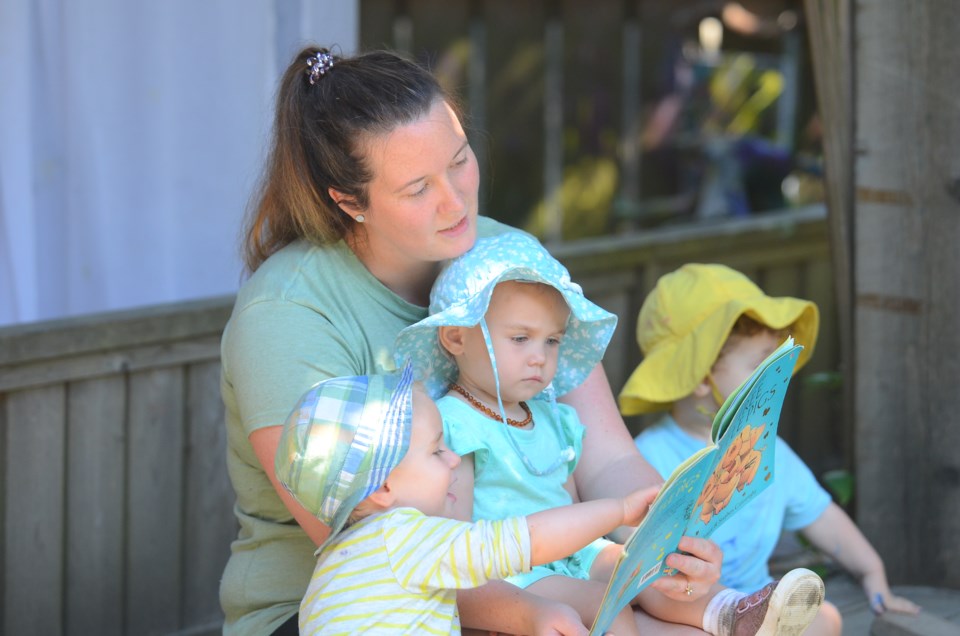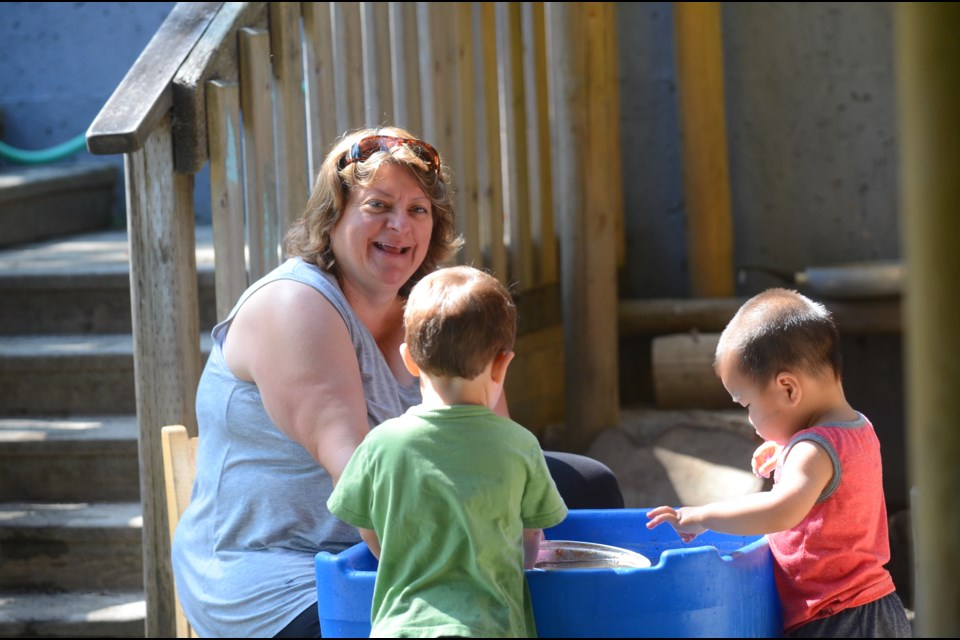A series of tiered wooden buildings nestled into the lush forest of Burnaby Mountain house a network of classrooms, playgrounds and offices connected by shaded outdoor walkways.
A steady stream of laughs, hoots and squeaky voices spurt from all around and reverberate through the home of SFU’s Childcare Society.
“It kind of feels like a fort,” says Laura Bayes, describing the facility’s “treehouse vibe.”
When Bayes was a kid, she called this is calm oasis in the trees her second home. Now, years later, she brings her own children, 8 and 6, to SCS as she studies archeology a short walk away at the university.
The non-profit is celebrating its 50th anniversary of providing top-notch childcare to SFU’s faculty, staff, students and surrounding community. SCS currently cares for roughly 300 kids and is Burnaby’s largest child-care provider.
Children from infants younger than one to kids in after-school programs up to Grade 6 attend its two locations – the wooden “fort” on the west end of campus and UniverCity Childcare to the east.
“When I think about my time here, I don’t have any bad memories,” Bayes says. “It brings a smile to my face to think of that period.”
And she’s reminded often of those good times. She takes her two boys to the centre every week and she still has a picture book she made there as a kid documenting her adventures in scribbled pictures and words.
Bayes says her kids are too young to appreciate the “generational connection” their family has to the place, but they do appreciate the care they receive there.
“It was just a really fun environment and it’s nice, as a kid, to feel safe being apart from your parents and it’s often hard as a child to build that trust with someone but the educators here are very welcoming and they always have been.”
The SCS method

Pat Frouws, the centre’s executive director, says the environment, the teachers and the children themselves all play large roles in an intentional strategy that goes far beyond simply minding kids while their parents work.
“We are convinced the children of tomorrow, the adults of tomorrow, need to be curious, need to collaborate and need to be creative,” she says.
The SCS method is inspired by the Italian Reggio Emilia approach, which puts the children’s interests at the forefront. It also puts great focus on the children’s surroundings, making their environment a crucial part of their early learning.
For example, Frouws says, SCS educators will leave pieces of wire on a table and allow kids play with them. She said many parents will be surprised to see kids younger than three rig a simple tool out of the wire and use it to reach a light switch.
There are few plastic objects at SCS facilities and more buckets, blocks and shovels than most early childhood facilities.
This helps them learn how the physical world works, Frouws explains.
“We don’t know what we need in the future, it’s not rote learning or adult-directed learning,” she says. “They need to be able to think on their own and get along with others.”
This early learning includes playing with dirt, dumping buckets of water into a sink and even hiking into the forest to find berries to make muffins with.
“It’s viewing children differently – as capable and competent,” says Fouws.
Educators who listen

Nita Pedersen says she has only seen the care for kids improve over her 28 years as an educator with SCS.
She says the centre has gotten “stronger and better over the years, as educators have been listening to kids more and more.”
When kids want to play with ropes, they might spend a couple weeks learning all of the different ways they can be fun or useful.
“This allows for the children to begin making choices,” Pedersen says.
“I’m thinking that it’s making them stronger individuals that are going to be able to express what they’re wanting and what they’re needing.”
Feels like home

Nancy Hawkins says her sons have benefitted immensely from the care they have received at SCS.
Her eldest son, now 21, still looks back fondly on his time at the centre.
When he transferred to middle school in Coquitlam, he still chose to bus to SFU to continue attending the Voyagers after-school program.
“It was a home to him,” she says. “It was this absolutely welcoming place where he could just be 100 per cent himself.”
Now her younger son, 10, is following in his brother’s footsteps. He has gone all the way through the SCS gamut from its infant, toddler, pre-school and now attending the same after-school program.
He and his pals build intricate race tracks for marbles or spend long hours playing basketball or try to break silly records – like who can wiggle their ears the most times – set by previous generations of SCS kids.
Whatever they do in a day, it’s largely decided by them, the kids.
Hawkins, who chairs SFU’s molecular biology and biochemistry department, became so enamoured with the SCS approach to child care, she decided to get involved.
She now sits as vice-chair on its board of directors.
“Once you’re here as a parent, you realize that this is a really special place,” she says.
“It’s a community and you want to be involved in that community.”
SCS has already held an educator appreciation day and a family fun day as part of its 50th anniversary celebrations.
On Sept. 21, SCS will host its a dinner and silent auction at the Diamond Alumni Centre at Burnaby’s SFU campus (tickets are $25). First Nations artist Jody Broomfield is taking input from children enrolled in SCS programs as he creates a commemorative art piece that will be unveiled at the dinner. On Oct. 13 SCS will open its child-care centre for an open house.



